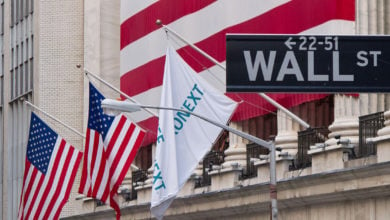 Originally posted July 5, on Marxism-Leninism Today.
Originally posted July 5, on Marxism-Leninism Today.
As a tool of social analysis, the concept of class fell into disfavor. Academics scoff at it as a crude, outdated remnant of a discredited Marxist tradition. Politicians scorn it as an affront to the social homogeneity of modern advanced democracies.
But the rising awareness of economic inequality and its growth in the US has recently brought the idea back into focus, though a decidedly cloudy focus.
The Occupy Movement, its counterparts and spin-offs, generated a simplistic picture of social class based upon an arbitrary, yet compelling division of income and wealth. The idea of the “1%” is a welcome radical slogan, but of little use in understanding the dynamics of various social groups and the relative stability of a social system operating against the interests of the 99%.
Others have contrived a structure that places a vast “middle class” at the center of US society with the decadently rich and the poor at the margins. This quasi-class structure is the preferred depiction of social democratic trade union leaders and politicians who rail against the “shrinkage” of the middle class while evading an indictment of corporations or capitalism. This construction is both misleading and politically impotent.
I cite this perspective in a recent post: Modern liberals have… [created] …an artificial class— the “middle class”— that purports to include hospital workers, food service workers, and sweatshop workers in the same class with doctors, lawyers, and financial managers. For those left out of this broad, meaningless class, the Democratic Party offers the fruits of volunteerism and charitable giving as expressed in its 2012 platform.
Unlike the Occupy movement’s hazy recognition of class antagonism, liberals see social harmony disrupted by unchecked greed. For them, the expansive “middle class” is a happy product of capitalism when properly regulated.
The Marxist Alternative
Like the Occupy movement, Marxists see a class divide roughly based on wealth and income. But they probe deeper for the cause of that divide, locating the cause in social relations unique to capitalism. Those social relations turn on a person’s relationship to the instruments essential to the creation of society’s wealth. Those who possess (own) those instruments form a social class (the bourgeoisie, capitalist class) that, not coincidentally, acquires a greater share of society’s wealth.
Those who own little or none of the instruments of production must hire themselves out to the owners of those instruments in order to find a place in the economic system. They exchange their labor for an income. But because they depend upon this exchange for their continued existence, the owners of the means of production maintain an advantage over them. Marx calls those who are dependent “the proletariat” (the working class); he calls the relationship of dependency “exploitation.”
Thus, capitalist society divides itself into two classes based upon a social/legal relation to the material and immaterial means of creating wealth: those who control (own) those means fall into the capitalist class; those who add their labor to the means of production constitute the working class.
Marx’s neat class divide calls for some refinement: he recognized that there were penumbra on the two major classes, lesser groups with ambiguous features. At the margin of the working class are déclassé workers who often survive by extra-legal means or as parasites on other workers. Marx dubbed this group the lumpen-proletariat.
But below the principal owners of the most powerful economic entities— the national and multinational corporations, in our era— is a group of small business owners, merchants, managers, consultants, intellectuals, and professionals who identify and share many interests with the bourgeoisie. Marx labeled this group the petty bourgeoisie or petite-bourgeoisie. Though the group’s relations to the means of production (and wealth) may be tenuous, those populating this group nonetheless tend to share values with the bourgeois class. The petty bourgeois world view is essentially that of the very wealthy and powerful.
The Petty Bourgeoisie and Today’s Politics
A recent (June, 2016) study by Stephen Rose of the Urban Institute gives credence to the Marxist class analysis and provides a key to both the resilience of capitalist domination and the current political crisis. Ross endeavoured to track the growth of the US “upper middle class” (UMC), an economic category assigned a benign name, but not reflective of a similarly benign role. While Rose chooses to define the UMC in terms of income— a slippery approach to class— his category roughly captures the class dimensions of the Marxist concept of the petty bourgeoisie. Rose’s income-filters select those who persistently identify with the bourgeoisie (Rose’s top .1-1.8% of incomes) because of their economic status.
His findings show a remarkable increase in the size of the UMC from 12.9% of the population in 1979 to 29.4% in 2014! In other words, the mass base potentially supporting the ideology and values of the so-called 1% more than doubled in size in 35 years.
Even more striking, the rich and the upper middle class accounted for 30% of all income in 1979. By 2014, their share grew to 63.1% of all income, demonstrating the enormous growth in resources available to those with a vested interest in capitalism and the status quo.
Thus, as 70% of the population— the working class and the poor— experienced greater and greater inequality, rising poverty and insecurity, intensifying racism, unemployment, and growing debt, the capitalist class and its junior partners grew in size, wealth, and influence. At the same time, the class divide grew wider.
What Does the Class Analysis Reveal?
The relative growth and strength of the petty bourgeoisie offers a powerful ally with the capitalist class before an increasingly demoralized, poorly led, and fragmented majority. As the capitalist/petty bourgeois coalition became more powerful over the last 35 years, union militancy declined, electoral cynicism grew, and radical opposition faded, further denying the majority its place in the democratic process and the defense of its interests.
Clearly, the simplistic class analysis of the 1% versus the 99% fails to grasp the implications of this development. It offers no explanation of the inability of the 99% to simply overpower the will of the 1%. And it fails to reveal the pitfalls of petty bourgeois leadership.
Likewise, the social democratic theory of a thriving, homogenous “middle class” favors class collaboration with a powerful, rapacious coalition of the rich and their bedfellows. This road, too, is a dead end.
When one brings the Marxist analysis to bear on the Democratic Party, it is possible to understand the shift to the New Democrats that found full expression in the Clinton and Obama administrations. I wrote in May: …the social base of the Democratic Party shifted, in the post-Watergate era, away from poor and working class voters, its traditional base through most of the twentieth century, toward professionals and middle strata in urban centers and suburban bedroom communities.
This observation finds an empirical foundation in the data available with the June release of the Rose study; the correlation of the shift and the emergent power of the petty bourgeoisie is no accident. The unparalleled growth of the petty bourgeoisie in size, resources, and voting power becomes a target for the two US parties. In the case of the Democrats, with their traditional link to labor and minorities guaranteed by ossified leaders, upper-income, “liberal” professionals have come to play a decisive role.
The traditional New Deal agenda offered again and again as a tease for workers, Blacks, Latinos, and the poor has been discarded for the social issues near and dear to the petty bourgeoisie. Redistribution, as a sop to the old coalition, gave way to “A rising tide lifts all boats,” the New Democrat metaphor for Reagan’s “trickle down” economics. Gun control, sexual politics, lifestyle issues replace bread and butter.
The contest between the two parties became a contest for the votes, resources, and agenda of the upper income 30%. The remaining 70% were fed an unappetizing gruel of empty promises and neglect.
Of course the US two parties have always been bourgeois parties in the sense that they are, in the end, owned by the rich and powerful and are committed to preserving the existing economic and social relations. However, the Democratic Party, for most of the twentieth century, competed for the loyalty of workers and minorities, conceding small reforms to maintain that coalition. With the wedding of labor unions and civil rights organizations to the Democrats, that deference is no longer necessary. With the ascendency of the petty bourgeoisie, a new agenda has emerged— one decidedly negligent of the interests of the working class and its allies.
It is likely that a similar expansion of the size and influence of the petty bourgeoisie accounts for the devolution of New Labour in the UK, the Socialists-in-name-only in France, and of other popular parties in Europe.
Sanders, Trump, and Brexit
This season of political shock and awe leaves many elites and servile pundits with soiled underwear; they are scrambling to respond to the rejection of the script carefully prepared for the electorate. Sanders was not supposed to seriously challenge the trusted Democratic Party corporate candidate; Trump was supposed to be a sideshow to the anointing of another trusted corporate candidate for the Republican Party; and in the UK, citizens were supposed to follow their “betters” and vote for the continuation of a state of affairs that served only the interests of the privileged.
In all three cases, voters showed an unexpected and unprecedented refusal to be herded like sheep toward preordained outcomes. Voters demonstrated anger and independence. And their anger was directed at political institutions, parties, and politicians that have failed them. The outrage marks the first stages of a rejection of political options that take the majority of the people for granted and ignore or deflect their interests. In a real sense, the class dynamics outlined above have led to a crisis of legitimacy in both the US and the EU. In the short run, it may be contained. But. going forward, the political crisis will only deepen.





